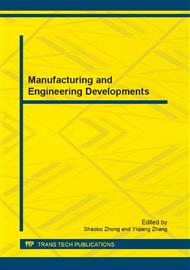p.8
p.13
p.18
p.22
p.28
p.34
p.39
p.45
p.49
Evaluation Research of the Control Effectiveness of Underground Defensive Projects Thermal and Humidity Environment
Abstract:
In order to reduce the cost and improve efficiency at the same time of maintaining the underground defensive projects thermal and humidity environment, in this paper, on the basis of the analysis of the control method of underground defensive projects thermal and humidity environment, DEA evaluation method is used to evaluate the control scheme of underground defensive projects thermal and humidity environment. An example of evaluation is given. The example shows that the method used in this paper can be used to order the control scheme of underground defensive projects thermal and humidity environment effectively.
Info:
Periodical:
Pages:
28-33
Citation:
Online since:
January 2013
Authors:
Price:
Сopyright:
© 2013 Trans Tech Publications Ltd. All Rights Reserved
Share:
Citation:


